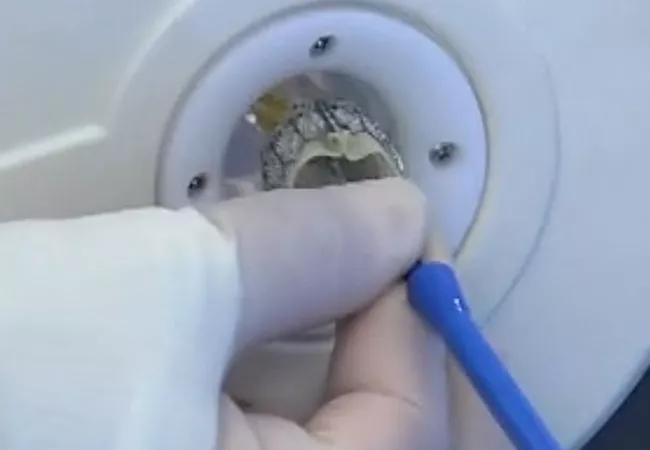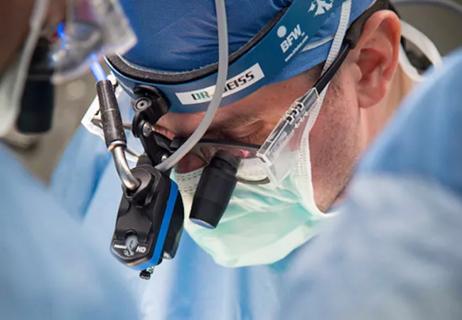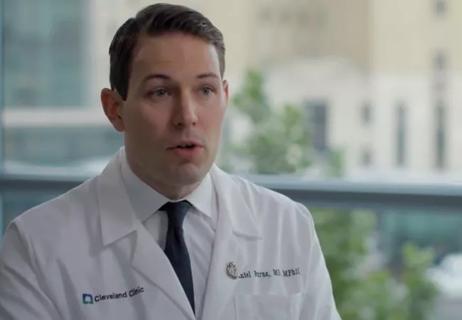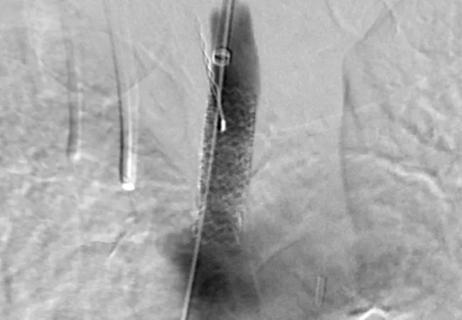An expert Q&A on degeneration findings from EuroPCR

After more than a decade of experience involving over 250,000 patients in 65 countries, transcatheter aortic valve replacement (TAVR) has been shown to be an accepted alternative to surgical aortic valve replacement (AVR) for high-risk surgical patients. As efforts to substantiate TAVR’s safety in lower-risk patients continue, a study presented at the EuroPCR meeting in May 2016 raised eyebrows when researchers suggested that half of TAVR valves may degenerate within 10 years.
Cleveland Clinic is a non-profit academic medical center. Advertising on our site helps support our mission. We do not endorse non-Cleveland Clinic products or services. Policy
In the Q&A below, two Cleveland Clinic valve replacement experts — cardiothoracic surgeon Lars G. Svensson, MD, PhD, Chair of the Miller Family Heart & Vascular Institute, and Samir Kapadia, MD, Section Head of Invasive and Interventional Cardiology — draw on their institution’s nearly unmatched experience in both TAVR and surgical AVR to weigh in on these findings and their implications. The Q&A is prefaced by recap of the study presented at EuroPCR, the annual meeting of the European Association for Percutaneous Cardiovascular Interventions.
Danny Dvir, MD, of St. Paul’s Hospital in Vancouver, Canada, and colleagues in Rouen, France, undertook a study of the long-term durability of aortic valves implanted by TAVR at their hospitals between 2002 and 2011. All were early-generation devices — either Edwards SAPIEN, Edwards SAPIEN XT or Cribier-Edwards valves.
After exclusion of patients who did not survive 30 days, or who experienced immediate valve failure or underwent valve-in-valve replacement, 378 of the original 704 patients remained. This cohort was followed with echocardiography for up to 10 years. The 100 patients who survived five years were examined for valve deterioration, defined as moderate or worse aortic regurgitation or a mean gradient greater than 20 mm Hg after 30 days.
Using these criteria, 35 cases of valve degeneration were noted: About two-thirds involved regurgitation, and one-third involved stenosis or mixed pathology. The median time to degeneration was 61 months, with a “significant number” of valves showing deterioration between five and seven years, according to Dr. Dvir. The Kaplan-Meier estimate for the eight-year rate of valve degeneration was approximately 50 percent.
Dr. Kapadia: No, because I do not think the data are accurate. We have been performing TAVR for 10 years, and only three patients out of 1,500 or so have required valve replacement. This is a rare event, and there is no need to be alarmed.
Dr. Kapadia: There is no benchmark for defining degeneration. The choice of a 20 mm Hg gradient difference was arbitrary. In the surgical literature, the traditional definition has been the need for valve replacement, which this study did not examine.
Dr. Kapadia: The PARTNER trials randomized patients to surgical AVR or TAVR. All echos were sent to central labs at Cleveland Clinic and Duke for evaluation. No statistical difference was seen in pressure gradients between surgical AVR and TAVR patients up to five years post-procedure. There was no indication that TAVR patients needed valve replacement.
Dr. Svensson: Some studies of surgical AVR have shown degeneration at six to seven years. The one porcine stentless valve initially looked good, but it rapidly deteriorated at six or seven years and had a high failure rate at 10 years. It was taken off the market.
RELATED: 5-Year Results of PARTNER 1A Find TAVR Equivalent to Surgical AVR
Dr. Kapadia: Newer valves last longer than older valves, but since we don’t know how fast the valves are deteriorating, this is not an easy question to answer. We’re currently testing the hypothesis that preventing blood clots by giving warfarin for three months after TAVR or surgical AVR will extend the life of the valve.
New valve design is a moving target. Most new valves have different ways of preserving the tissue. Here at Cleveland Clinic, we developed a dry-storage valve that is very exciting.
Dr. Svensson: The leaflets of a TAVR valve are slightly thinner than those of an open surgery valve. In our studies of open valve surgery, an early postoperative leak or gradient is indicative of a higher failure rate over time. Studies have shown that stresses on TAVR valves are higher, particularly when malalignment of supporting points is seen.
It’s interesting that in patients with surgically implanted Edwards valves, most failures are related to stenosis. In this study, more than half of deteriorations were from leakage and breakdown. This suggests a different mechanism of failure.
Dr. Kapadia: It is not a big deal. We can put a new valve inside the prosthesis.
Dr. Svensson: Agreed. So long as the patient is a candidate for repeat TAVR through the femoral artery, and the valve we used is big enough, it shouldn’t be an issue if the valve fails.
Dr. Svensson: We tell patients that 80 percent of valves are still working 20 years after surgery. It still comes down to which patients should have TAVR versus surgical AVR. Every institution should recommend what they are best at doing.
Dr. Svensson: The FDA required that the trial be stopped at five years. We are planning to contact all surviving PARTNER patients and ask if we can continue to get echos up to 10 years to see if this is a problem or not.
Remember that this is a high-risk cohort, and we had excellent results with TAVR. It all comes back to when to recommend TAVR versus open AVR. In the commercially insured population, TAVR is performed in high-risk or inoperable patients with an impressive mortality rate of 2 to 3 percent. Compare this with our mortality rate of 0.46 percent for open isolated valve replacement in more than 2,300 patients. In surgical AVR, older patients are less likely to experience valve deterioration than younger patients. Appropriate use of TAVR and surgical AVR in expert centers can provide the best patient outcomes.

How our first century has impacted cardiovascular practice

Review offers comprehensive assessment of the landscape for wearables and more

Preserving trust in research requires vigilance and consensus around statistical nuances

Cardiac surgeon Patrick Vargo, MD, reflects on his first year as Cleveland Clinic staff

Improved risk prediction for patients is at the heart of Dr. Aaron Weiss’ research interests

Centralization would likely bring better outcomes, experts say, but may not be feasible

Dr. Daniel Burns on mentorship, robotic valve surgery, statistics and more

JACC review makes the case and outlines how to ensure oversight